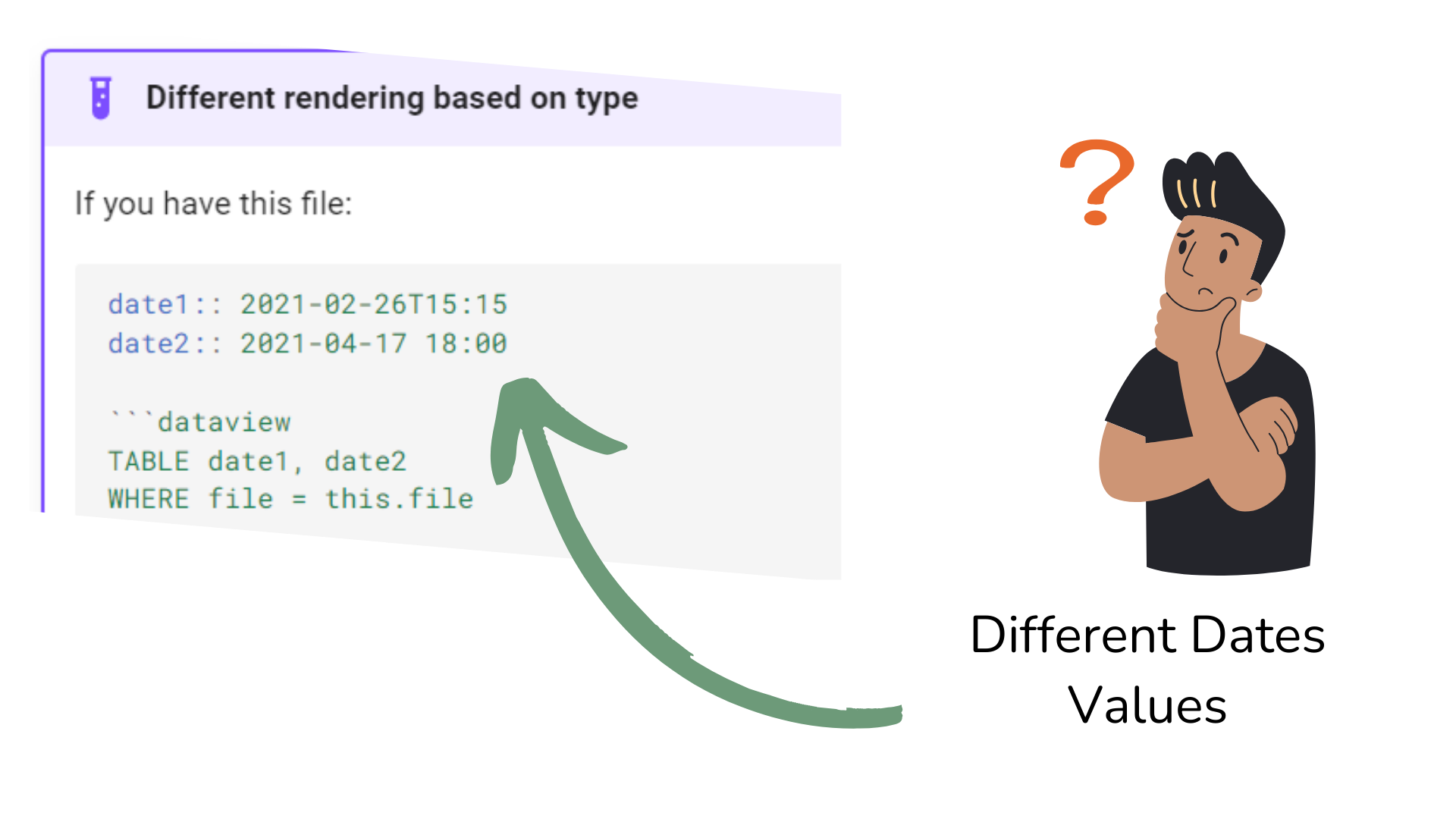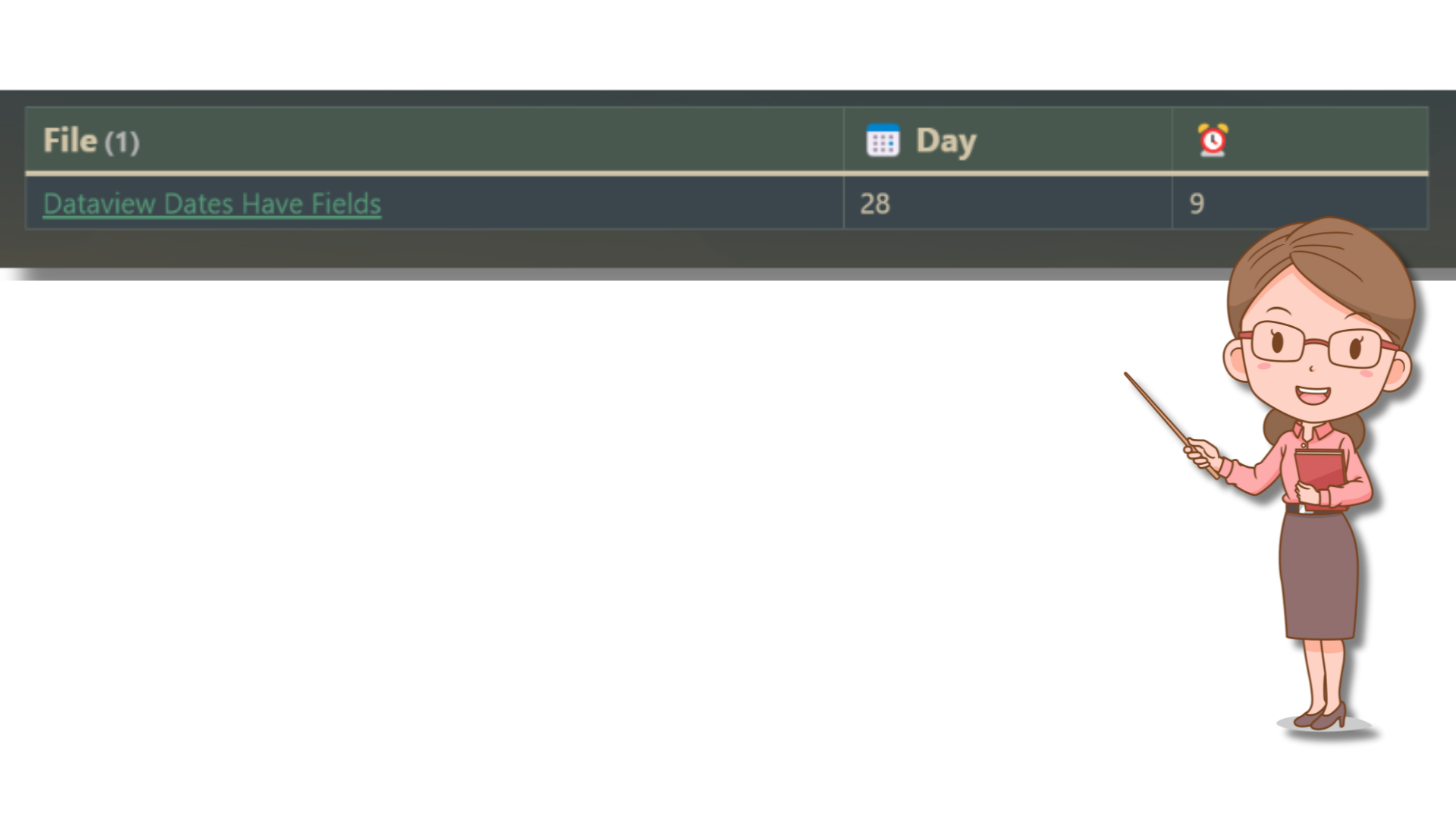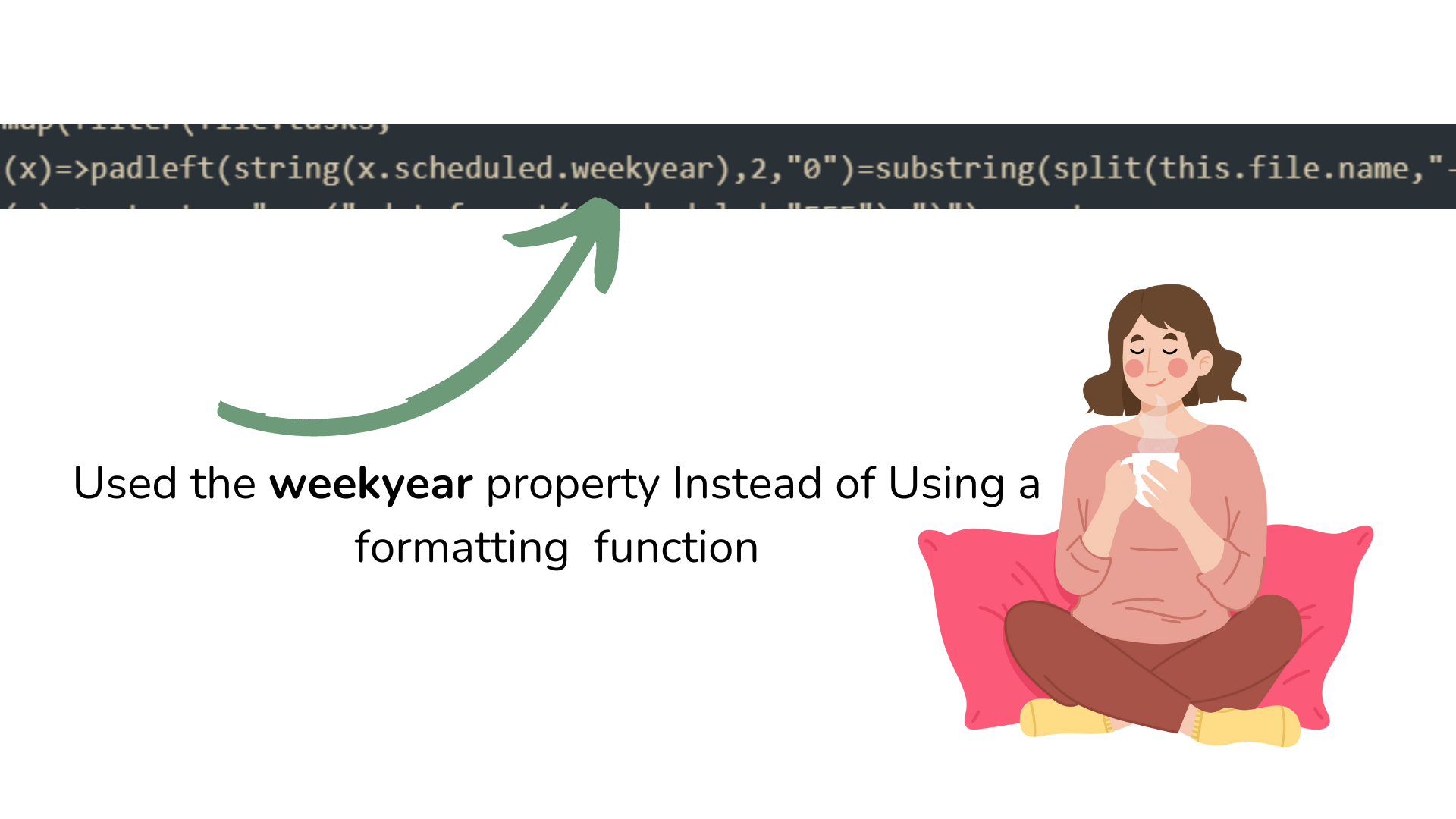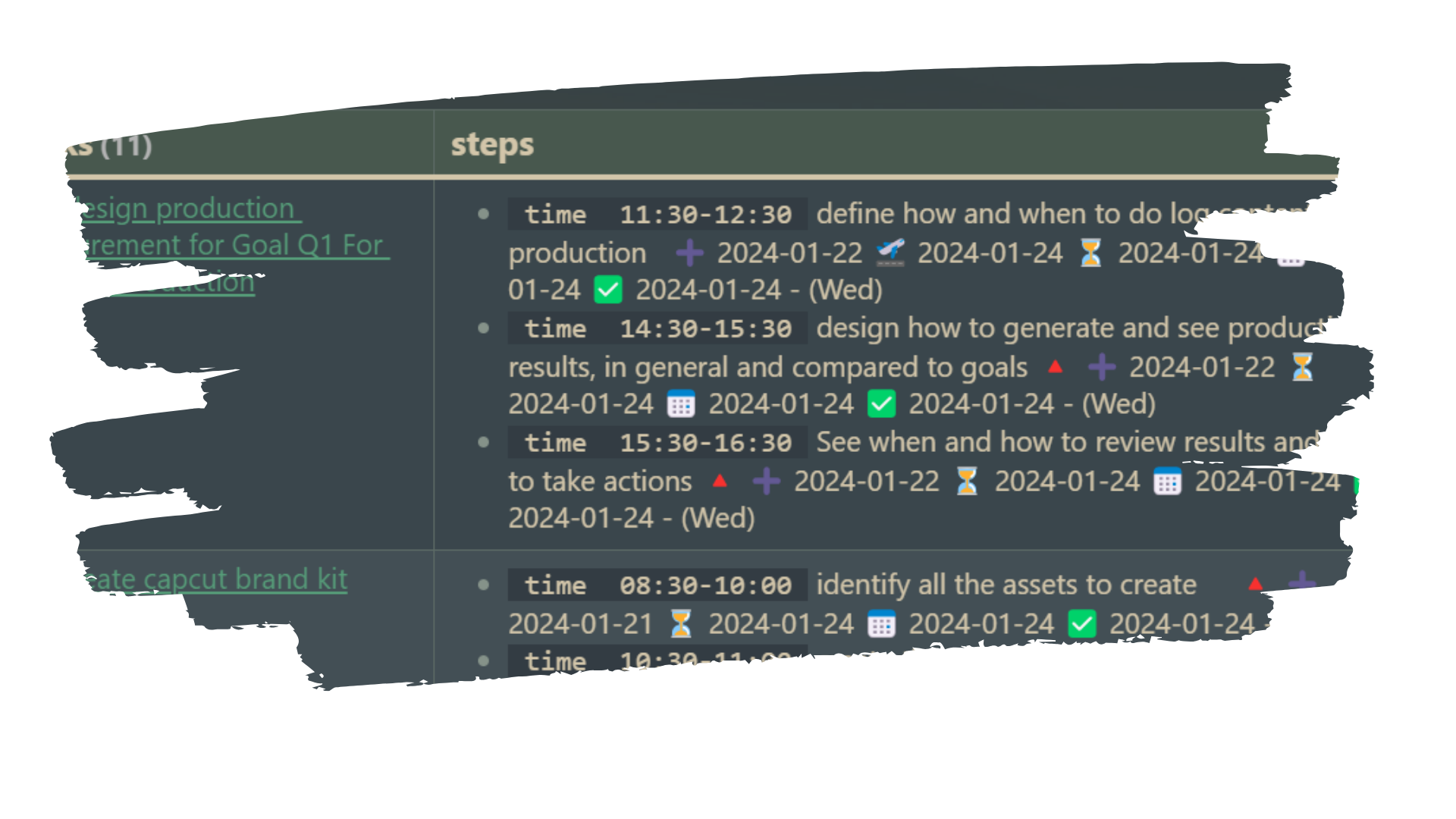A Date Data type
One of the most interesting Data type related to Dataview Fields in Obsidian are dates.
The Dataview I am talking about is the Obsidian plugin that allows you to query data from your Obsidian notes using the Dataview Query Language.
The data is extracted from your notes frontmatter, from your inline fields, or from implicit fields related to your notes. To learn more about this data, you can check the following documentation page.
And if you don’t know, Obsidian is a note taking app that uses Markdown markup language for text formatting. It allows you to take notes, easily link between them, automatically generate a graph displaying all the connection available between your notes, and install powerful plugins that allow you to transform your notes, and automate your workflow while using the app.
Dates types are objects that can be created from text formatted using the ISO8601 notation. But when displaying their values, Dataview will render them in a human readable format .

What I discovered
You can access a particular date or time information from the date object itself, by accessing its properties. For example, to get the month corresponding to a particular date field, all you have to do is to use the dot notation with the date field in question.
For example, let say you want to display the month property value of the creation date field (ctime) of a particular note, so you can just write:
file.ctime.month
There are multiple date and time properties that you can access the same way:
file.ctime.year |
file.ctime.month |
file.ctime.weekyear |
file.ctime.week |
file.ctime.weekday |
file.ctime.day |
file.ctime.hour |
file.ctime.minute |
file.ctime.second |
file.ctime.millisecond |
For example, right now, I am writing this post on Obsidian. And, if I want to display the day and the hour of the date corresponding to the creation of the note I am writing, I can simply use the following Dataview expression:
```dataview
table file.ctime.day as "📅 Day",
file.ctime.hour as "⏰"
where file =this.file
```
And the result would be:

How I used it
I wanted to display the tasks planned in a particular week, and the formula I was writing was already long enough, so the use of the date property was really useful to shorten the expression:
```dataview
table without id file.link as Tasks,
map(filter(file.tasks, (x)=>padleft(string(x.scheduled.weekyear),2,"0")=substring(split(this.file.name,"-")[1],1)),(x)=>x.text +" - ("+dateformat(x.scheduled,"EEE")+")") as steps
from "Execute/Projects"
where file.name[3]="-"
and length(filter(file.tasks, (x)=>padleft(string(x.scheduled.weekyear),2,"0")=substring(split(this.file.name,"-")[1],1)))>0
```

The expression was written inside a weekly note with a name formatted as follow:
4 digits representing the year+”-W “+ 2 digits representing the week number (“yyyy-‘W’WW”). For example the weekly note of the week 4 is named: 2024-W04
Here a portion of the result:
